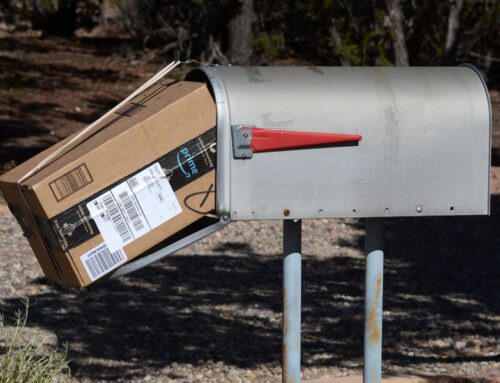Korea Launches “30×30 Alliance” on the 2025 World Environment Day
June 27, 2025
Blog 27 Jun, 2025

Photo: JiBoo Park
This high-level forum brought together national agencies, major corporations, NGOs, academic institutions, and international organisations in a united effort to achieve the country’s biodiversity conservation and ecosystem restoration goals by 2030.
The Alliance supports the implementation of the Kunming-Montreal Global Biodiversity Framework (GBF), particularly Targets 2 and 3, which call for the effective conservation of at least 30% of terrestrial and marine areas (Target 3) and the restoration of at least 30% of degraded ecosystems (Target 2). Members committed to identifying and managing both Protected Areas (PAs) and Other Effective Area-based Conservation Measures (OECMs), while also scaling up ecological restoration initiatives.
The “30×30 Alliance” is a voluntary, multi-stakeholder platform initiated by the Ministry of Environment to coordinate efforts across sectors toward these global goals. It brings together government agencies, public institutions, corporations, NGOs, and academia to share knowledge, mobilize resources, identify priority sites, and co-develop implementation strategies. Each stakeholder contributes through its own strengths—policy, research, ESG leadership, monitoring, or community action.
Participants included Samsung Electronics, POSCO DX, Hyundai Rotem, the Korea National Park Service (KNPS), IUCN, WWF Korea, the Ramsar Regional Centre–East Asia, and key national research institutes. The event marked the first national platform in Korea to formally integrate both conservation and restoration through inclusive, cross-sectoral collaboration.
The first part of the event featured the launch ceremony of the 30×30 Alliance, accompanied by a symbolic performance to commemorate the occasion. In the second part of the event, presentations were made on Korea’s operational plan for the 30×30 Alliance, international trends regarding OECMs, and the national guidelines for OECMs in Korea.

Siska Sihombing
In his opening remarks, Vice Minister Byung-Hwa Lee highlighted the significance of launching the Alliance in connection with World Environment Day: “Protecting and restoring nature is not only a national imperative but also a shared global responsibility. This Alliance is a platform for united action toward a nature-positive and resilient future.”
In their remarks on the 30×30 target and OECMs, Hag Young Heo of the Korea National Park Service (KNPS) and Siska Sihombing of IUCN emphasized a shared understanding that ‘OECMs are not a shortcut to 30×30—they are not simply numbers to add. They represent an opportunity to reimagine conservation in a more inclusive and holistic way”.
One of the highlighted bilateral meetings in Jeju was the discussion of a new collaboration project between IUCN and the Government of Korea titled “Pathways to 30×30 through OECMs as part of the Integrated Protected and Conserved Areas System in South Korea, Asia, and Beyond.” This project, supported under the Ministry of Environment–IUCN Framework Partnership 2025, aims to scale up effective protected and conserved area systems, including OECMs, and promote the IUCN Green List Standard for effectiveness sustainability. Spanning from 2025 to 2027, the initiative will operate across national, regional, and global levels, leveraging Korea’s leadership and lessons from the similar project in 2022-2024, including leveraging strengths to the 30×30 Alliance. The project will be led by the IUCN Protected and Conserved Areas with a strong collaboration of the IUCN Asia Regional Office, IUCN China Office and the Korea Park National Service. It signifies a concrete step forward in operationalising the ambitions of the 30×30 target and further reinforces Korea’s commitment to biodiversity conservation through inclusive and verifiable approaches.
Key Presentations:
-
Mr. Jae-Won Moon (Director, Division of Environmental Policy, Ministry of Environment): Outlined Korea’s integrated approach to the 30×30 target, including policy tools, national strategies, and partnerships for effective delivery.
-
Ms. Siska Sihombing (IUCN Global Protected and Conserved Areas): Shared international guidance on OECMs and their role in achieving GBF Target 3, highlighting global trends in inclusive and effective area-based conservation.
-
Dr. Hagyoung Heo (Korea National Park Service): Presented Korea’s national OECM identification guideline, including site-based criteria and implementation practices.
-
Dr. Seungwoo Son (Korea Environment Institute): Discussed ESG-driven strategies for corporate engagement in conservation and restoration, focusing on measurable biodiversity outcomes.
-
Dr. Jaeho Lee (National Institute of Biological Resources): Introduced indicators and monitoring frameworks to assess ecological integrity and restoration success.

JiBoo Park

JiBoo Park
Opinions expressed in posts featured on any Crossroads or other blogs and in related comments are those of the authors and do not necessarily reflect the opinions of IUCN or a consensus of its Member organisations.IUCN moderates comments and reserves the right to remove posts that are deemed inappropriate, commercial in nature or unrelated to blog posts.
Search
RECENT PRESS RELEASES
Related Post



